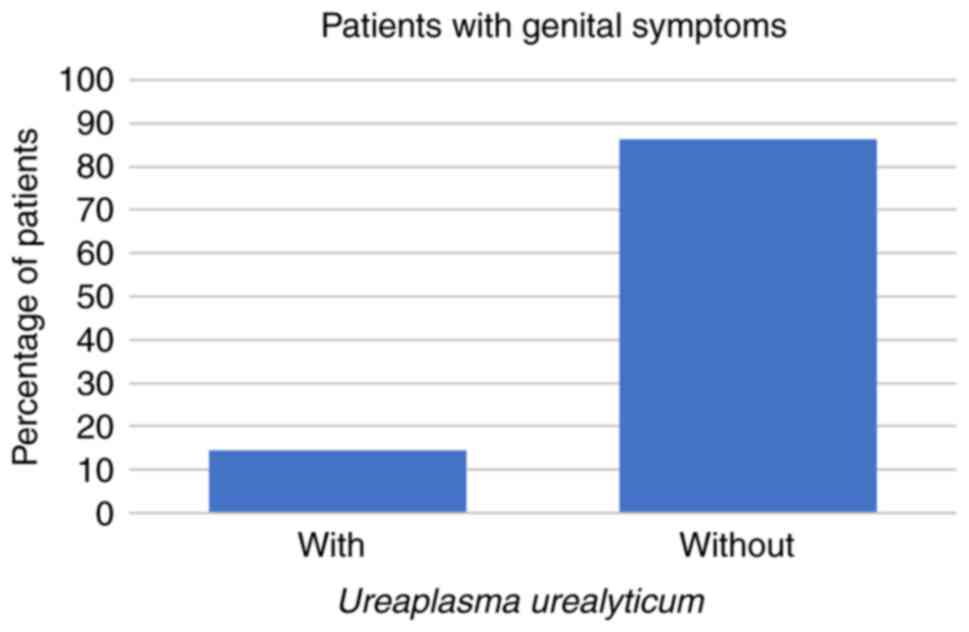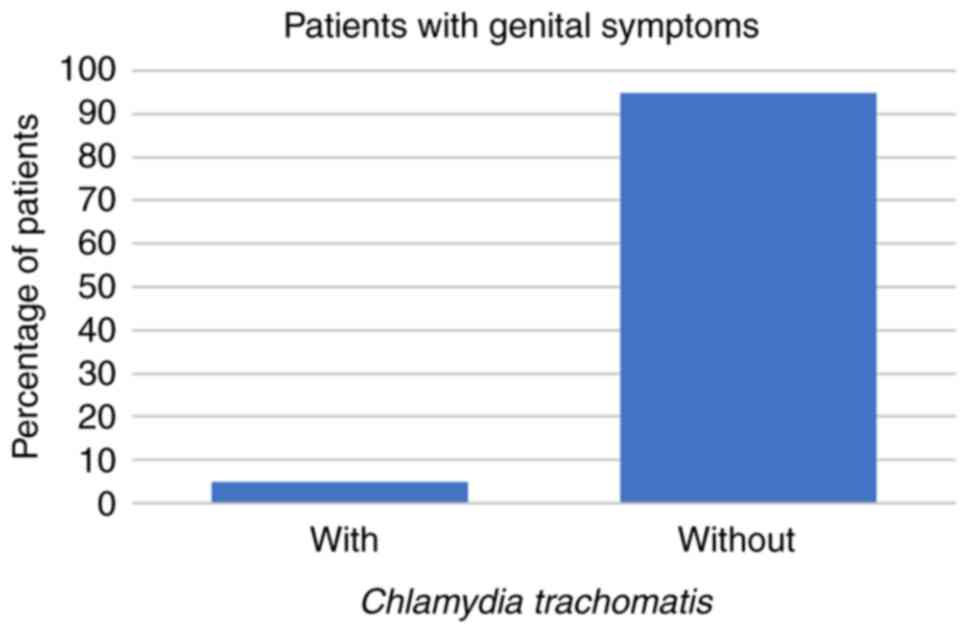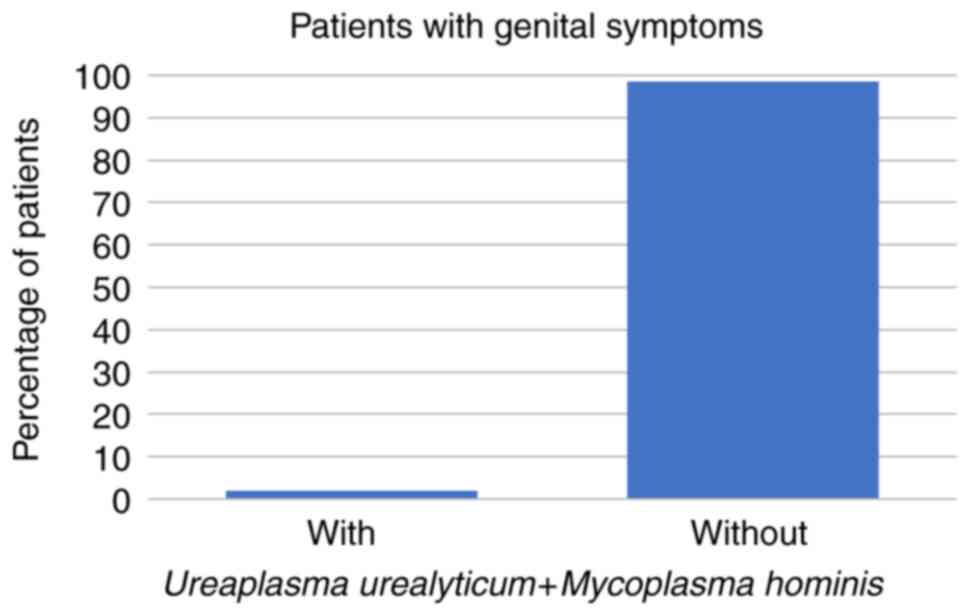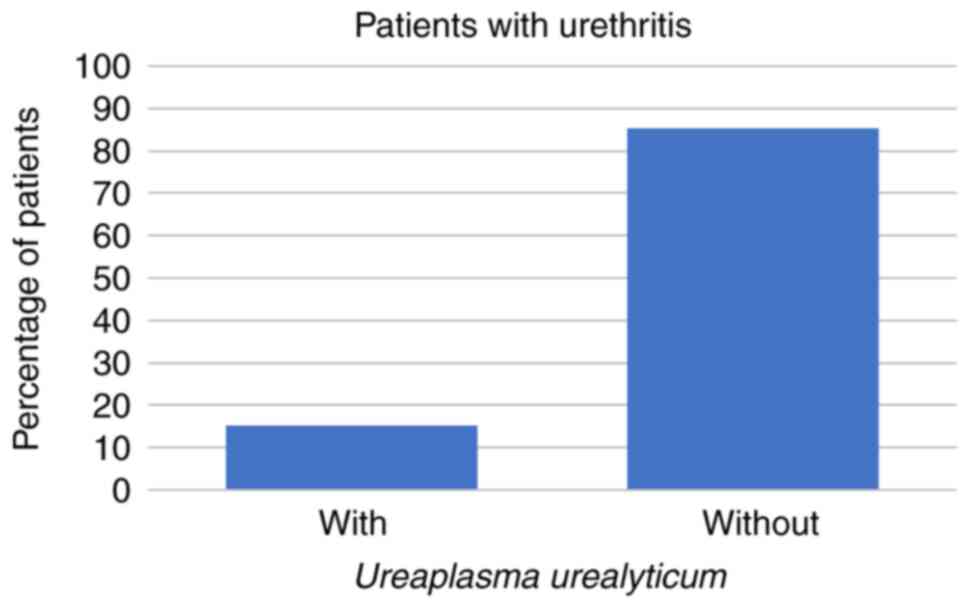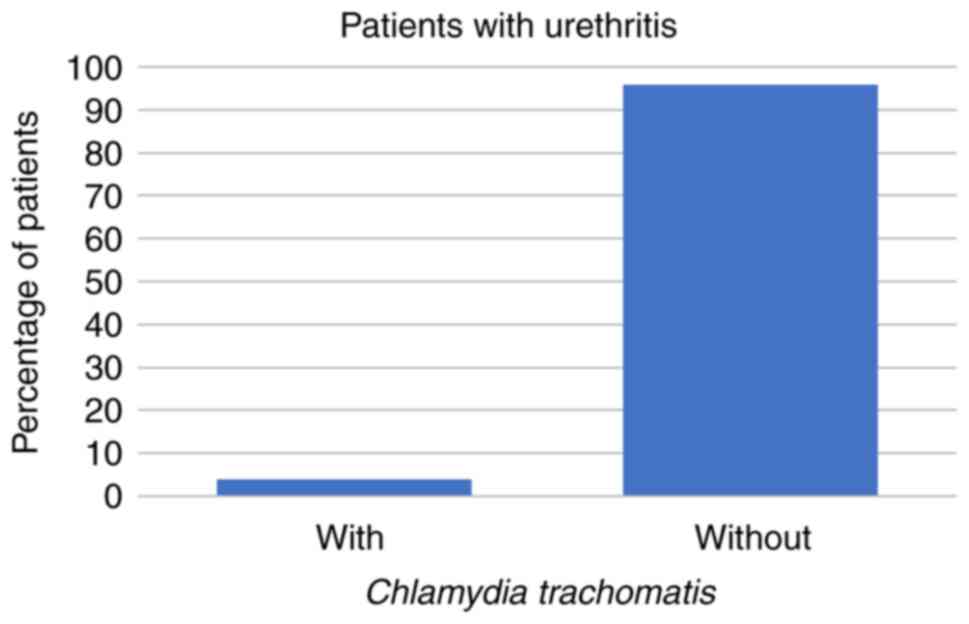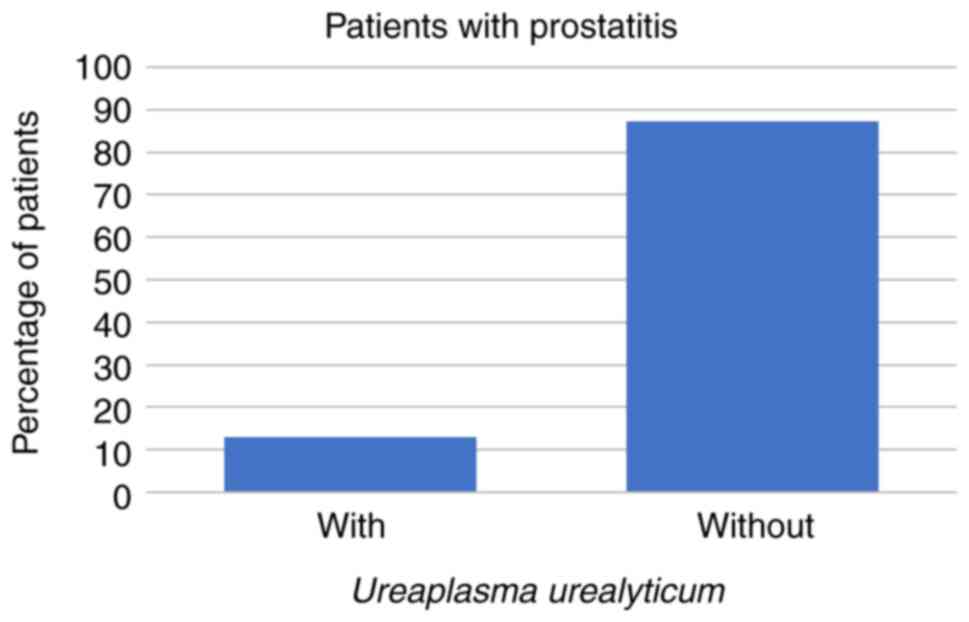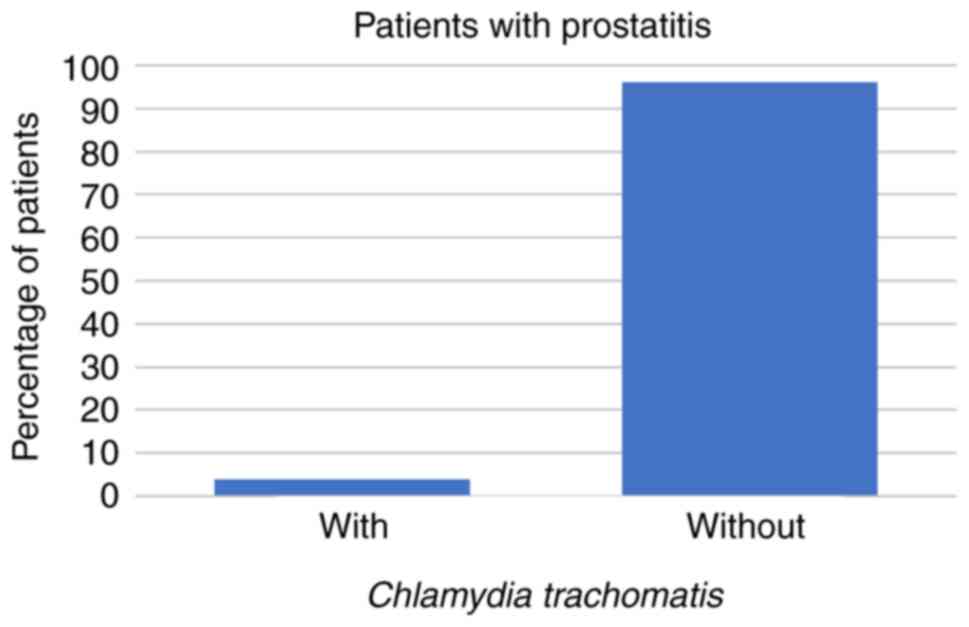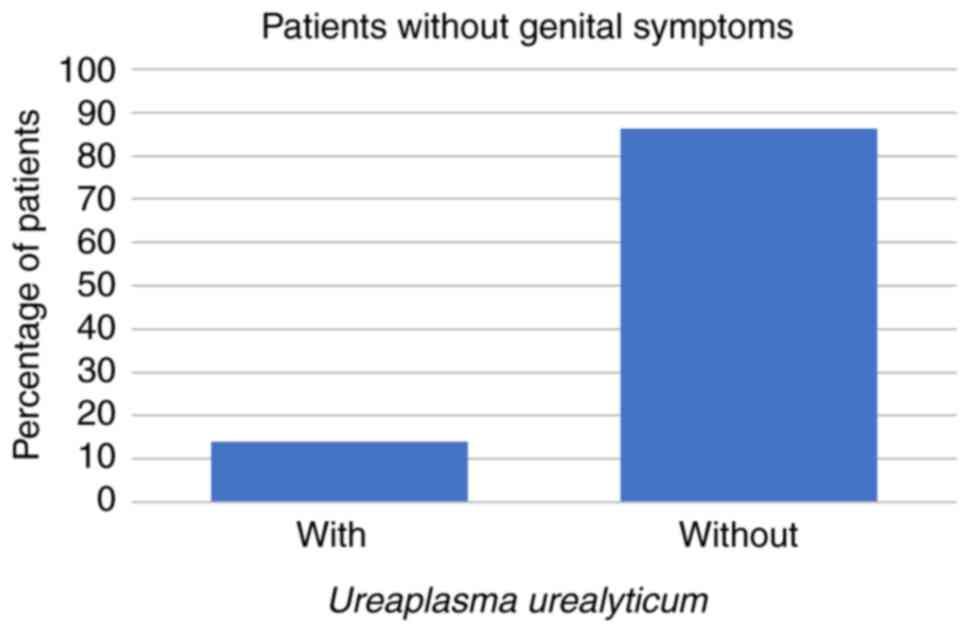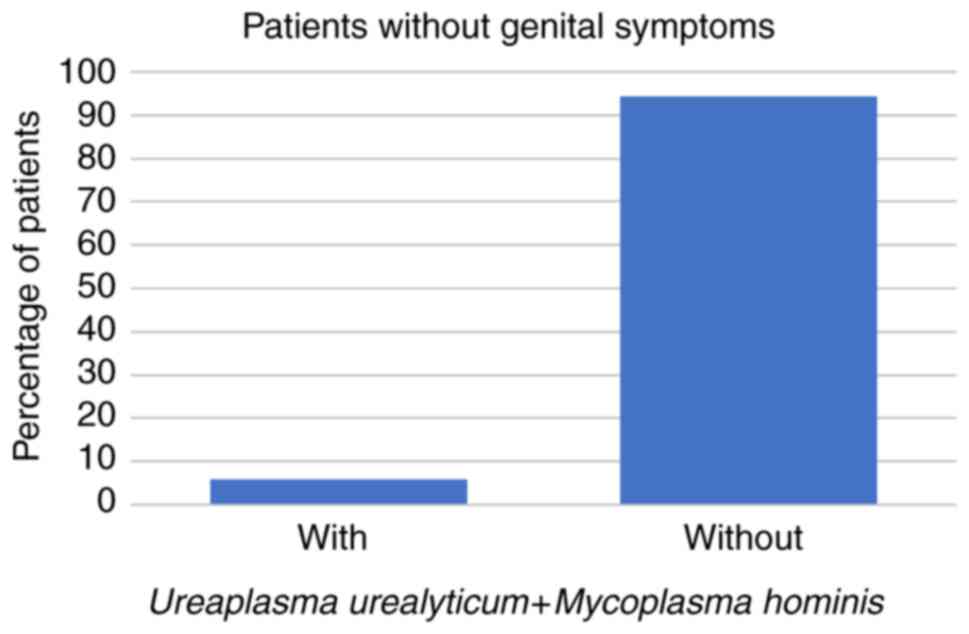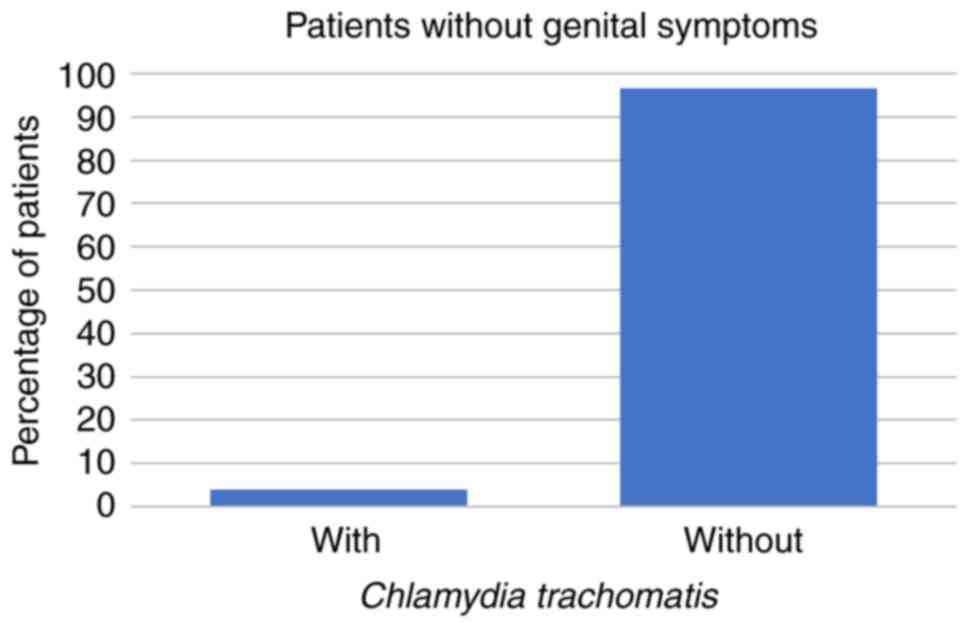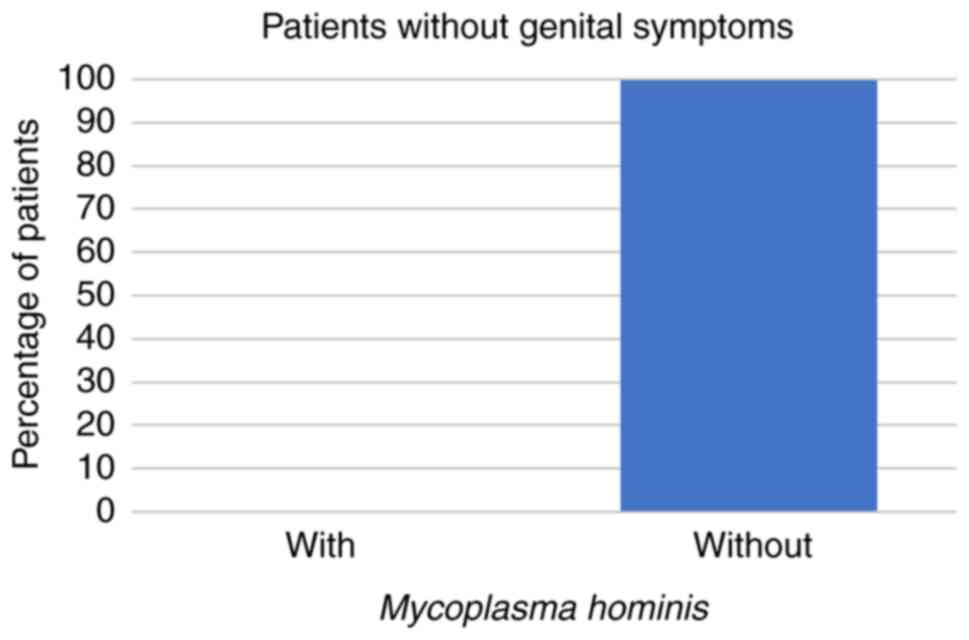|
1
|
Campos GB, Lobão TN, Selis NN, Amorim AT,
Martins HB, Barbosa MS, Oliveira TH, dos Santos DB, Figueiredo TB,
Miranda Marques L and Timenetsky J: Prevalence of Mycoplasma
genitalium and Mycoplasma hominis in urogenital tract of Brazilian
women. BMC Infect Dis. 15(60)2015.PubMed/NCBI View Article : Google Scholar
|
|
2
|
Choe HS, Lee DS, Lee SJ, Hong SH, Park DC,
Lee MK, Kim TH and Cho YH: Performance of AbyplexsTM II
multiplex real-time PCR for the diagnosis of seven sexually
transmitted infections: Comparison with currently available
methods. Int J Infect Dis. 17:e1134–e1140. 2013.PubMed/NCBI View Article : Google Scholar
|
|
3
|
Wetmore CM, Manhart LE, Lowens MS, Golden
MR, Whittington WL, Xet-Mull AM, Astete SG, McFarland NL, McDougal
SJ and Totten PA: Demographic, behavioral, and clinical
characteristics of men with nongonococcal urethritis differ by
etiology: A case-comparison study. Sex Transm Dis. 38:180–186.
2011.PubMed/NCBI View Article : Google Scholar
|
|
4
|
Esen B, Gozalan A, Sevindi DF, Demirbas A,
Onde U, Erkayran U, Karakoc AE, Hasçiçek AM, Ergün Y and Adiloglu
AK: Ureaplasma urealyticum: Presence among Sexually transmitted
diseases. Jpn J Infect Dis. 70:75–79. 2017.PubMed/NCBI View Article : Google Scholar
|
|
5
|
Salari MH and Karimi A: Prevalence of
Ureaplasma urealyticum and Mycoplasma genitalium in men with
non-gonococcal urethritis. East Mediterr Health J. 9:291–295.
2003.PubMed/NCBI
|
|
6
|
Dielissen PW, Teunissen DA and
Lagro-Janssen AL: Chlamydia prevalence in the general population:
Is there a sex difference? a systematic review. BMC Infect Dis.
13(534)2013.PubMed/NCBI View Article : Google Scholar
|
|
7
|
Lee JY and Yang JS: Prevalence and
antimicrobial susceptibility of mycoplasma hominis and ureaplasma
species in nonpregnant female patients in South Korea indicate an
increasing trend of pristinamycin-resistant isolates. Antimicrob
Agents Chemother. 64:e01065–20. 2020.PubMed/NCBI View Article : Google Scholar
|
|
8
|
Cutoiu A and Boda D: Antimicrobial
Resistance of Ureaplasma Urealyticum and Mycoplasma Hominis in the
Romanian population. Farmacia. 71(1)2023.
|
|
9
|
D'Inzeo T, De Angelis G, Fiori B,
Menchinelli G, Liotti FM, Morandotti GA, De Maio F, Nagel D,
Antonaci M, Sanguinetti M and Spanu T: Comparison of Mycoplasma
IES, Mycofast Revolution and Mycoplasma IST2 to detect genital
mycoplasmas in clinical samples. J Infect Dev Ctries. 11:98–101.
2017.PubMed/NCBI View Article : Google Scholar
|
|
10
|
Christofolini DM, Leuzzi L, Mafra FA,
Rodart I, Kayaki EA, Bianco B and Barbosa CP: Prevalence of cases
of Mycoplasma hominis, Mycoplasma genitalium, Ureaplasma
urealyticum and Chlamydia trachomatis in women with no gynecologic
complaints. Reprod Med Biol. 11:201–215. 2012.PubMed/NCBI View Article : Google Scholar
|
|
11
|
Stary A, Schuh E, Kerschbaumer M, Gotz B
and Lee H: Performance of transcription-mediated amplification and
Ligase chain reaction assays for detection of chlamydial infection
in urogenital samples obtained by invasive and noninvasive methods.
J Clin Microbiol. 36:2666–2670. 1998.PubMed/NCBI View Article : Google Scholar
|
|
12
|
Cordova CM and Cunha RA: Relevant
prevalence of Mycoplasma hominis and Ureaplasma urealyticum
serogroups in HIV-1 infected men without urethritis symptoms. Rev
Inst Med Trop Sao Paulo. 42:185–188. 2000.PubMed/NCBI View Article : Google Scholar
|
|
13
|
Foschi C, Salvo M, Galli S, Moroni A,
Cevenini R and Marangoni A: Prevalence and antimicrobial resistance
of genital Mollicutes in Italy over a two-year period. New
Microbiol. 41:153–158. 2018.PubMed/NCBI
|
|
14
|
Moridi K, Hemmaty M, Azimian A, Fallah MH,
Khaneghahi Abyaneh H and Ghazvini K: Epidemiology of genital
infections caused by Mycoplasma hominis, M. genitalium and
Ureaplasma urealyticum in Iran; a systematic review and
meta-analysis study (2000-2019). BMC Public Health.
20(1020)2020.PubMed/NCBI View Article : Google Scholar
|
|
15
|
Moi H, Blee K and Horner PJ: Management of
non-gonococcal urethritis. BMC Infect Dis. 15(294)2015.PubMed/NCBI View Article : Google Scholar
|
|
16
|
Park JJ, Seo YB, Jeong S and Lee J:
Prevalence of and risk factors for sexually transmitted infections
among Korean adolescents under probation. J Korean Med Sci.
32:1771–1778. 2017.PubMed/NCBI View Article : Google Scholar
|
|
17
|
Grad AI, Vica ML, Ungureanu L, Siserman
CV, Tătaru AD and Matei HV: Assessment of STI screening in Romania
using a multiplex PCR technique. J Infect Dev Ctries. 14:341–348.
2020.PubMed/NCBI View Article : Google Scholar
|
|
18
|
Huai P, Li F, Chu T, Liu D, Liu J and
Zhang F: Prevalence of genital Chlamydia trachomatis infection in
the general population: A meta-analysis. BMC Infect Dis.
20(589)2020.PubMed/NCBI View Article : Google Scholar
|
|
19
|
Foronda-García-Hidalgo C, Liébana-Martos
C, Gutiérrez-Soto B, Expósito-Ruiz M, Navarro-Marí JM and
Gutiérrez-Fernández J: Prevalence among males from the general
population of agents responsible of not ulcerative genital tract
infections, assisted in specialized care. Rev Esp Quimioter.
32:545–550. 2019.PubMed/NCBI(In Spanish).
|
|
20
|
Song J, Wu X, Kong Y, Jin H, Yang T, Xie X
and Zhang J: Prevalence and antibiotics resistance of Ureaplasma
species and Mycoplasma hominis in Hangzhou, China, from 2013 to
2019. Front Microbiol. 13(982429)2022.PubMed/NCBI View Article : Google Scholar
|
|
21
|
Zhu X, Li M, Cao H, Yang X and Zhang C:
Epidemiology of Ureaplasma urealyticum and Mycoplasma hominis in
the semen of male outpatients with reproductive disorders. Exp Ther
Med. 12:1165–1170. 2016.PubMed/NCBI View Article : Google Scholar
|
|
22
|
Sarier M, Sepin N, Duman I, Demir M, Hizel
A, Göktaş Ş, Emek M, Kukul E and Soylu A: Microscopy of
Gram-stained urethral smear in the diagnosis of urethritis: Which
threshold value should be selected? Andrologia.
50(e13143)2018.PubMed/NCBI View Article : Google Scholar
|
|
23
|
Sarier M, Sepin N, Emek M, Germen AT,
Hoscan MB, Konuk E and Turgut H: Evaluating the utility of the A.F.
Genital System test for pathogen diagnosis in acute male
urethritis. Andrologia. 54(e14377)2022.PubMed/NCBI View Article : Google Scholar
|
|
24
|
Sarier M, Demir M, Turgut H, Hizel A, Emek
M, Kukul E and Sepin N: New approach to microscopy of gram-stained
urethral smear: The kissing slide method. Sex Transm Dis.
47:712–715. 2020.PubMed/NCBI View Article : Google Scholar
|















